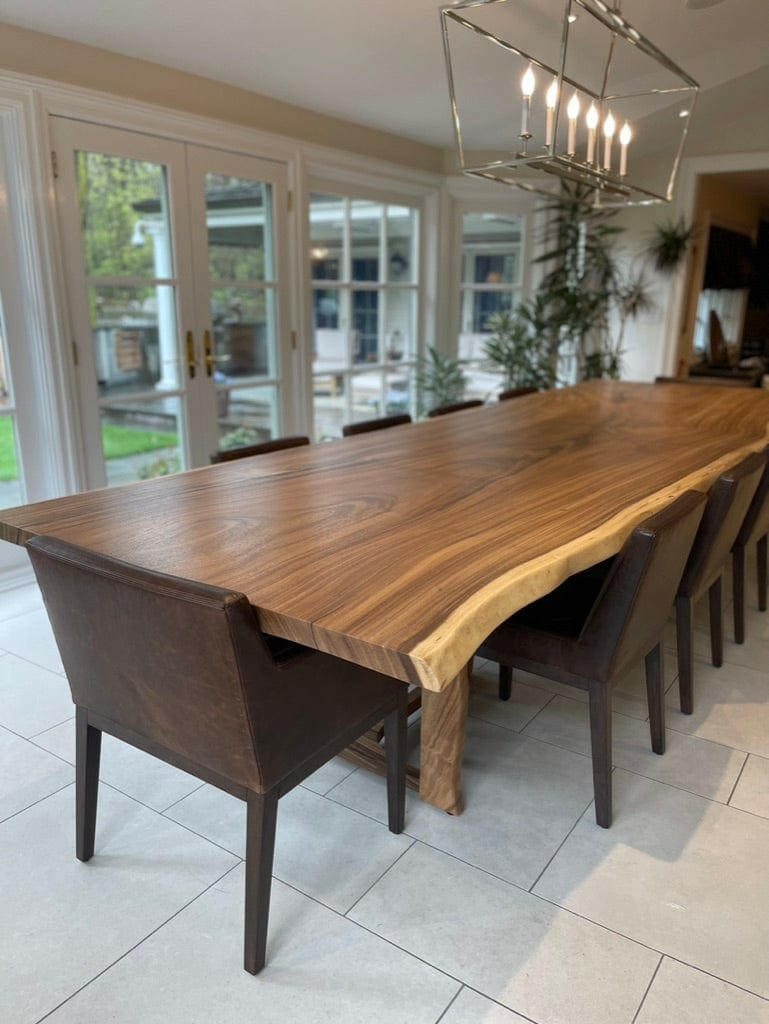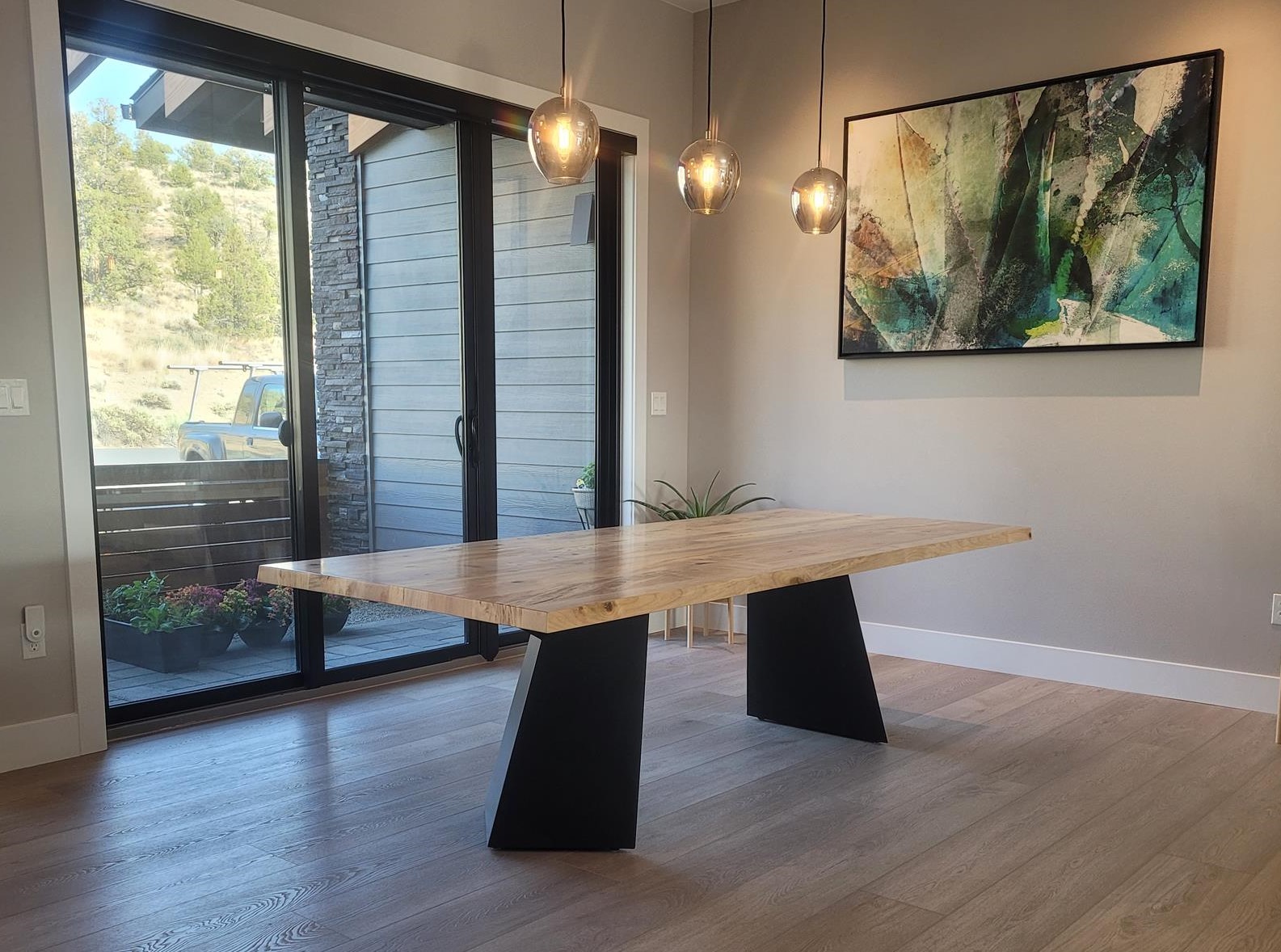Distinct Dining Room Table Legs to Transform Your Eating Location
Picking the Perfect Eating Table: What Styles Work Best for Your Home?
Picking the optimal table for your home can be a nuanced procedure that balances appearances and performance. Whether your space leans in the direction of conventional style, contemporary minimalism, rustic beauty, or industrial chic, the range of styles offered can accommodate diverse preferences. Each design supplies distinct advantages and obstacles that can either boost or disrupt your eating area's consistency. Comprehending just how different products, shapes, and sizes connect with your existing decoration is essential. To browse these choices successfully and locate a table that really enhances your home, consider the complying with facets in detail.
Analyzing Your Room
Evaluating the dimensions and design of your eating location is an essential very first step in choosing the best eating table. Begin by gauging the size and size of the room, accounting for doorways, windows, and other architectural features that could influence table placement. This guarantees that your table not only fits but also allows for comfortable movement around it.
Consider the number of people you generally captivate. A table ought to accommodate your household's daily needs while offering adequate versatility for occasional guests. Generally of thumb, assign at least 24 inches of table size each to make certain a comfy dining experience.
It's also important to maintain appropriate clearance around the table. Preferably, there must be at least 36 inches in between the table side and walls or other furnishings, allowing easy access and activity. For areas where chairs with arms or additional storage space devices like buffets are included, increasing this clearance to 48 inches is advisable.
Lighting and ambience play considerable roles. Make certain that your dining table aligns with existing lights fixtures or prepare for sufficient lighting options. This extensive spatial assessment assurances that your table not just fits physically yet also integrates with your room's general performance and visual.
Popular Table Styles

Conventional dining tables typically feature elaborate details, curved legs, and abundant timber surfaces, evoking a sense of timeless elegance. They are excellent for homes with timeless style or those seeking to include a touch of elegance to their dining location.
Modern eating tables prioritize simplicity and tidy lines, usually including products like glass and steel. These tables are optimal for contemporary rooms, giving a smooth and uncluttered look that enhances minimalist design ideologies.
Rustic table, on the various other hand, emphasize all-natural products and a handmade look - dining room table legs. They commonly feature reclaimed timber and a distressed coating, producing a warm and welcoming atmosphere. These tables function well in farmhouse-style homes or those seeking a cozy, organic feeling
Industrial dining tables incorporate raw products such as metal and timber, frequently showcasing a practical aesthetic. This design is appropriate for loft spaces or metropolitan spaces, adding a touch of rugged appeal and resilience to the eating experience.
Each style uses distinct benefits, making it important to pick one that aligns with your home's general design and your personal choices.
Material Options
When picking a table, the selection of material plays a critical function in determining both the table's looks and functionality. Timber, steel, glass, and composite materials each offer one-of-a-kind benefits and difficulties, making it essential to line up the product with your home's decor and way of life demands.
Timber is a timeless and flexible alternative, readily available in varieties such as oak, walnut, and mahogany. Understood for its longevity and warmth, wood matches both standard and modern interiors. try this However, it requires normal upkeep to avoid scrapes and bending.
Steel tables, frequently crafted from stainless steel, aluminum, or functioned iron, are applauded for their modern-day allure and effectiveness. They are specifically matched for industrial or minimal setups yet can be prone to dents and might really feel cool to the touch.
Glass table bring an air of elegance and openness, perfect for smaller sized rooms as they develop an impression of even more area. While simple to tidy, glass can be prone to smudges reference and needs cautious dealing with to avoid chips and cracks.
Composite materials, such as MDF and plywood, deal cost-efficient and personalized remedies, though they might lack the longevity of natural products. Picking the ideal material ensures your table is both a useful property and a visual delight.
Forming and Dimension Factors To Consider
After figuring out the appropriate product for your eating table, the next factor to consider is choosing the appropriate shape and dimension to suit your room. Conversely, rounded tables foster a sense of affection and are outstanding for smaller sized dining areas, urging conversation by removing edges and making everybody really feel equally included.
Dimension is equally vital and should be dictated by both the area's dimensions and the number of individuals you intend to seat on a regular basis. Generally of thumb, allocate at the very least 24 inches of table size each to guarantee comfortable dining. In addition, think about the table's clearance room: there should be at least 36 inches between the table edge and the wall surfaces or various other furnishings. This makes sure that diners can relocate about easily without feeling cramped. Expanding tables offer versatility if you regularly organize bigger gatherings, offering extra seats when required without inhabiting added room daily. Selecting the best shape and size makes sure both usefulness and visual consistency in your eating location.
Matching Your Decor
Choosing a dining table that integrates with your existing decoration is critical in creating a cohesive and welcoming space. Begin by analyzing your existing interior layout style, whether it be modern, visit homepage conventional, rustic, or diverse. The dining table should enhance the general visual, not contend with it. A smooth, minimal table with clean lines is ideal for a contemporary home, while a vintage, ornate table fits a more standard setting.
If your style includes warm tones and natural materials, think about a wood table to boost the natural feel. Conversely, a glass or metal table may be a lot more ideal in a room controlled by cool colors and industrial elements.
A rough-hewn, reclaimed timber table can include character to a rustic room, while a polished marble surface area can raise an extravagant dining area. A well-matched eating table not just enhances visual appeal but likewise enriches the total eating experience.

Final Thought
Picking the optimal eating table demands careful consideration of area, design, products, form, and size (dining room table legs). Conventional tables enhance timeless insides with abundant wood finishes, while contemporary tables fit modern setups via glass and steel. Rustic designs introduce warmth through natural materials, and commercial designs improve city settings with raw components. Harmonizing the dining table with existing decor guarantees both performance and visual charm, adding to a cohesive and visually pleasing dining area.